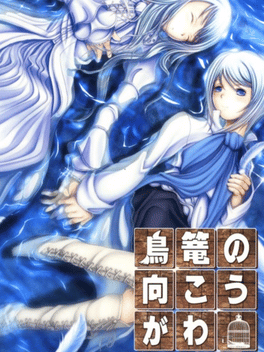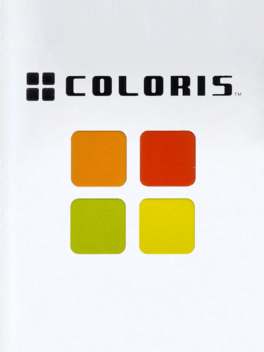New Games - Page 10238
-
Carol Vorderman's Sudoku
2006
star 8.5Let the ultimate Sudoku expert, Carol Vorderman, show you how to play and conquer the number game phenomenon sweeping the world. With over 1 million puzzle boards to choose from, experience countless hours and hours of fun. Play a casual game, learn step-by-step strategies to play or even test your skills in head-to-head competitive matches. Play against a friend in exciting multi-player modes. Through it all, Carol will teach you how to hone your Sudoku skills and ultimately become a Sudoku Expert. Carol Vorderman's Sudoku features a game for every level Sudoku player with exciting features and challenges. -
Metal Slug
2006
Metal Slug
2006
The game takes place in the year 2030, two years after the first Metal Slug game. Series antagonist General Morden becomes allies with Oguma, president of Oguma Enterprises and world leader of technology. Because this alliance could only stand to further strengthen Morden's military power, Marco Rossi, Fio Germi, Tarma Roving, and Eri Kasamoto set out to dissolve both parties. -
FullAni
2006
FullAni
2006
FullAni is a fully animated mahjong game, developed and published by Leaf, which was released in Japan in 2006. -
GT Racers
2006
-
Game & Watch Collection
2006
star 7.1Game & Watch Collection is a compilation cartridge featuring three of Nintendo's Multi-Screen Game & Watch games. Not available for purchase, this game could only be obtained in Japan, North America and Australia, by buying it with points included with Nintendo games and systems. The included games are: Oil Panic, Donkey Kong and Green House. -
Maniac Mole
2006
Maniac Mole
2006
After a mole awakes from a deep slumber he sees that the world around him has changed dramatically. His hole has been converted into a huge laboratory filled with deadly monsters. Now its up to you to help mole destroy the laboratory and take back what is rightfully his. -
James Pond: Codename Robocod
2006
Urgent communication: James Pond – Codename: RoboCod has got himself embroiled in some very 'fishy' business indeed, involving his arch-nemesis, the notorious super-villain…'Dr Maybe'! James Pond launches himself back into battle, to thwart the evil Dr Maybe and his dastardly plans for World domination. With help from his amazing new robotic suit, James Pond must traverse bizarre worlds, jumping, squashing, climbing, stretching and squishing bouncing bears, crazy cadillacs, whirling dervishes, chocolate mountains and not forgetting devious and wacky 'end-of level' bosses! -
London Cab Challenge
2006
London Cab Challenge
2006
London Cab Challenge is a racing/driving game similar to Crazy Taxi but using a British taxi cab. Each "mission" involves picking up and delivering customers to their destinations as quickly as possible, all while staying in the proper lane and avoiding collisions with traffic. A green arrow appears on-screen as a direction guide, changing to red when the destination spot is within sight. A yellow arrow helps in navigation, warning when a direction can be hazardous. An on-screen speedometer displays how fast the cab is going at all times. Missions increase in difficulty as the game progresses, and better drivers gain rewards that can be used to upgrade the cab. Scores are kept on a Ranking board. -
F1 06
2006
F1 06
2006
star 7.1FORMULA ONE 06 on is all about speed, competition and fast-paced action. If you're a novice, switch on the improved driver and racing aids to race for fun - or turn them off for a full length GRAND PRIX experience if you're a FORMULA ONE professional. FORMULA ONE 06 features the ability to Network Play between PlayStation 2 and PSP. This means players can now compete online across platforms to see who the fastest FORMULA ONE 06 racer is. In other words, if you own the PlayStation 2 version of the game and your friend owns the PSP version, you can still compete on the same circuit! -
Jinsei Game DS
2006
Jinsei Game DS
2006
A DS adaptation of the board game known in the US as "The Game of Life". Not to be confused with the other release on the DS known as "Jinsei Game". -
Torikago no Mukougawa
2006
You are summoned as a liberator in a world called Femto. A liberator is someone who can perform the ritual of freeing someone's mind. Your goal is to escape the world of Femto and return to your own world, and only way to do so is by freeing people's minds. The game consists of two main gameplay elements. The adventure part which is where the story unfolds and the typical visual novel dialogues are gone through, and a puzzle part which consists of two phases, a phase for moving puzzle pieces, and a phase for moving to a location. The puzzle picture consists of 15 key pieces in total, and you need to put them all in their right place to be able to escape. Each phase gives you limited number of turns and/or points you can spend until it is finished, after which another phase will start. By determining location, you will move onto corresponding adventure part. In each location during adventure element, various events will occur and you will be able to talk to characters there. After the adventure part is over, you wi -
Last Escort: Kokuchou Special Night
2006
Addition disc for Last Escort. Adds a new route and new endings for the existing options. -
Kyou Kara Maou!: Hajimari no Tabi
2006
Kyo Kara Maoh! Hajimari no Tabi is an Action game, developed by Namco and published by Bandai Namco Games, which was released in Japan in 2006. -
Kingdom of Loathing: The Home Game
2006
To promote their browser game Kingdom of Loathing, some of its developers put together a Choose-Your-Own-Adventure 'zine to distribute at the San Diego Comic Convention July 20-23rd 2006 and give its patrons a taste of the game's whimsical stickman artwork and distinctly bent sense of humour, what with the absurd character classes (disco bandit?) and the economy based on (sculptable) meat products. Obsessive fans being what they are, not long after the convention the real-world version of the game found itself converted back to an electronic format with the blessing and authorization of its creators. -
Densha de Go! Pocket: Toukaidousen-hen
2006
Densha de Go! Pocket: Toukaidousen-hen is a split port of the Densha de Go! Pocket line to the PlayStation Portable, all of which are based on parts of Desha de GO! FINAL: - Densha de Go! Pocket: Toukaidousen-hen (loosely translated to "Go by Train! Pocket: Tōkaidō Line Edition") was released on July 27, 2006, including only the Tōkaidō Main Line. -
Bit Generations: Coloris
2006
Coloris is a Game Boy Advance video game that is simply just a basic puzzle video game. In the game, you'll be required to place three similarly colored tiles next to each other in order to rid of them. However, unlike most games like this, you don't swap the tiles but rather start to change the color of the tile by pressing on them with the cursor. -
Blood+: Souyoku no Battle Rondo
2006
Player assumes a role of Saya Otonashi — an ordinary schoolgirl, who suffers from amnesia. Upon being attacked by a Chiropteran she learns that she's the only one who can defeat them. She engages in a journey with her family, allies, and her chevalier Haji, to defeat he Chiropterans and recover her identity. -
Zegapain XOR
2006
Zegapain XOR
2006
Zegapain XOR was released in Japan on July 27, 2006. The game is similar in nature to Zone of the Enders. A mech action game, the player controls Cerebrant Toga Vital and the plot runs parallel to the events of the anime. Zegapain XOR is set on the Oceanus-class ship Dvaraka and commanded by Isola, a recurring character in the anime series. Several characters who appear in the game make brief appearances in the anime series. -
Kamaitachi no Yoru Triple: Mikazukishima Jiken no Shinsou
2006
Toru Yajima and Mari Kobayashi return to Mikazuki Island. They stay at the cursed "prison" mansion once again and are joined by a cast of characters including Yosuke Mikimoto, Toshio Kubota, Seiichi Kayama, Keiko Kitano and a woman named Haruko. A murder mystery is afoot where gamers go through the story from the viewpoint of four characters who look at events from different perspectives (both literally and figuratively) in order to deduce the identity of the killer.




















